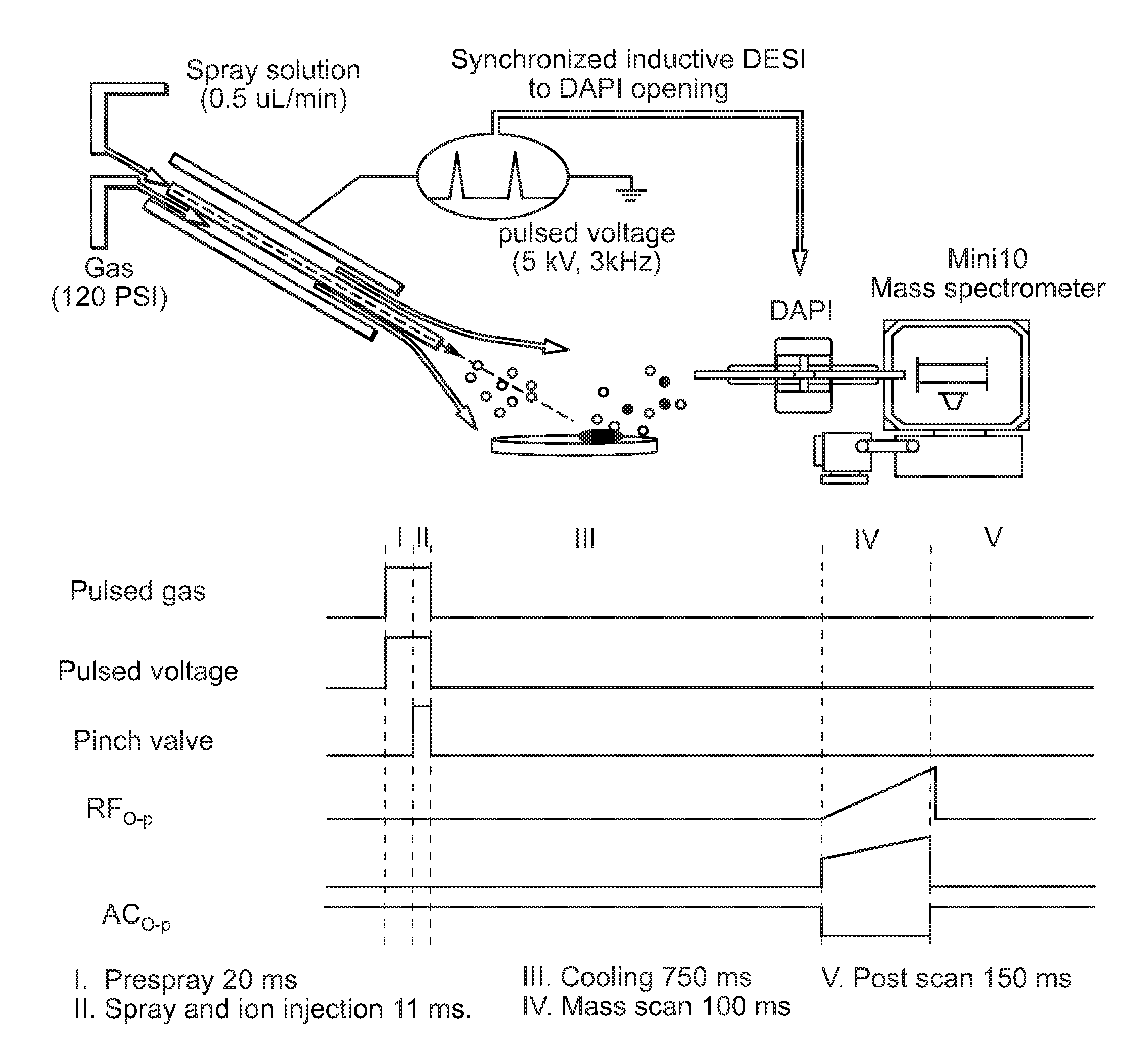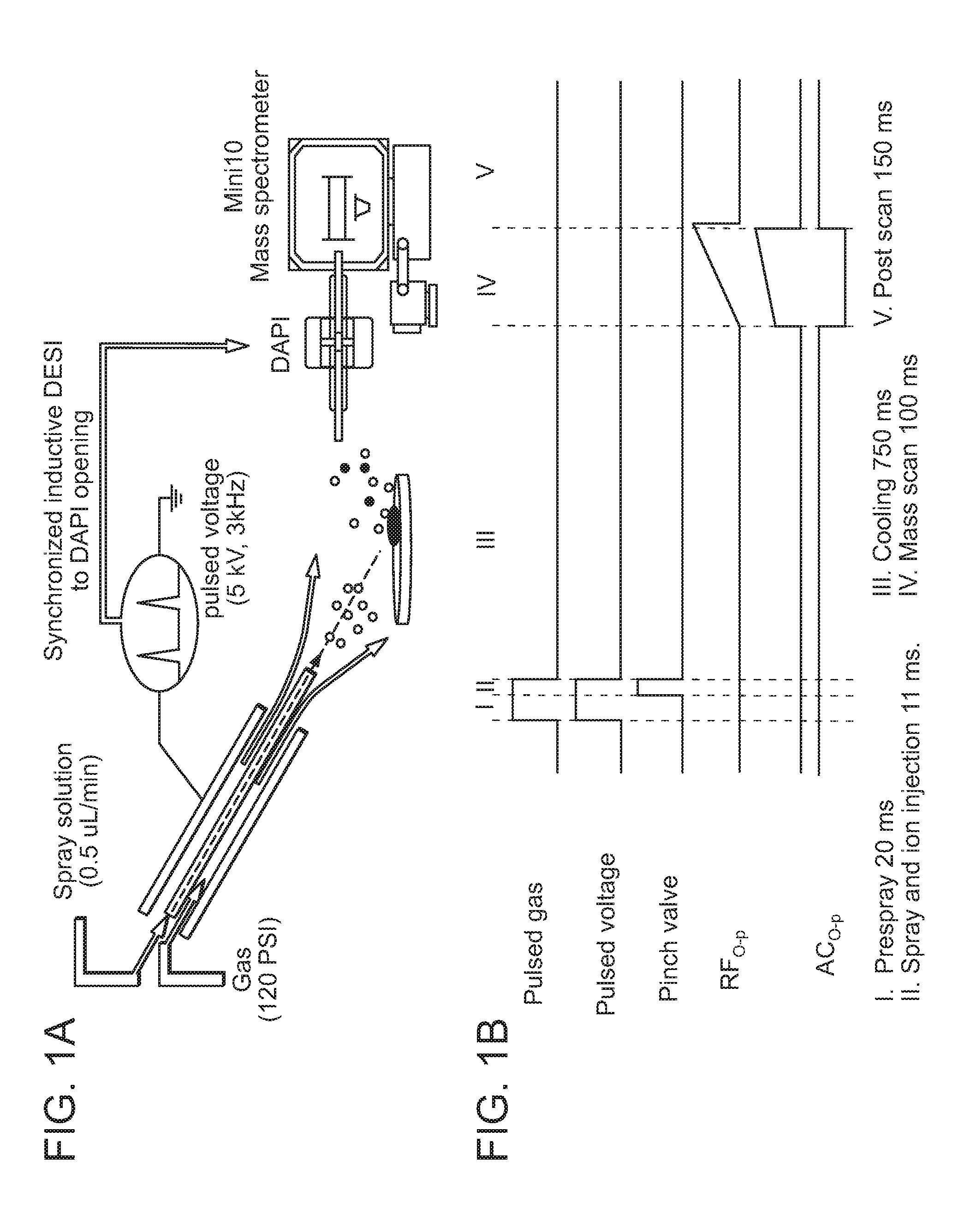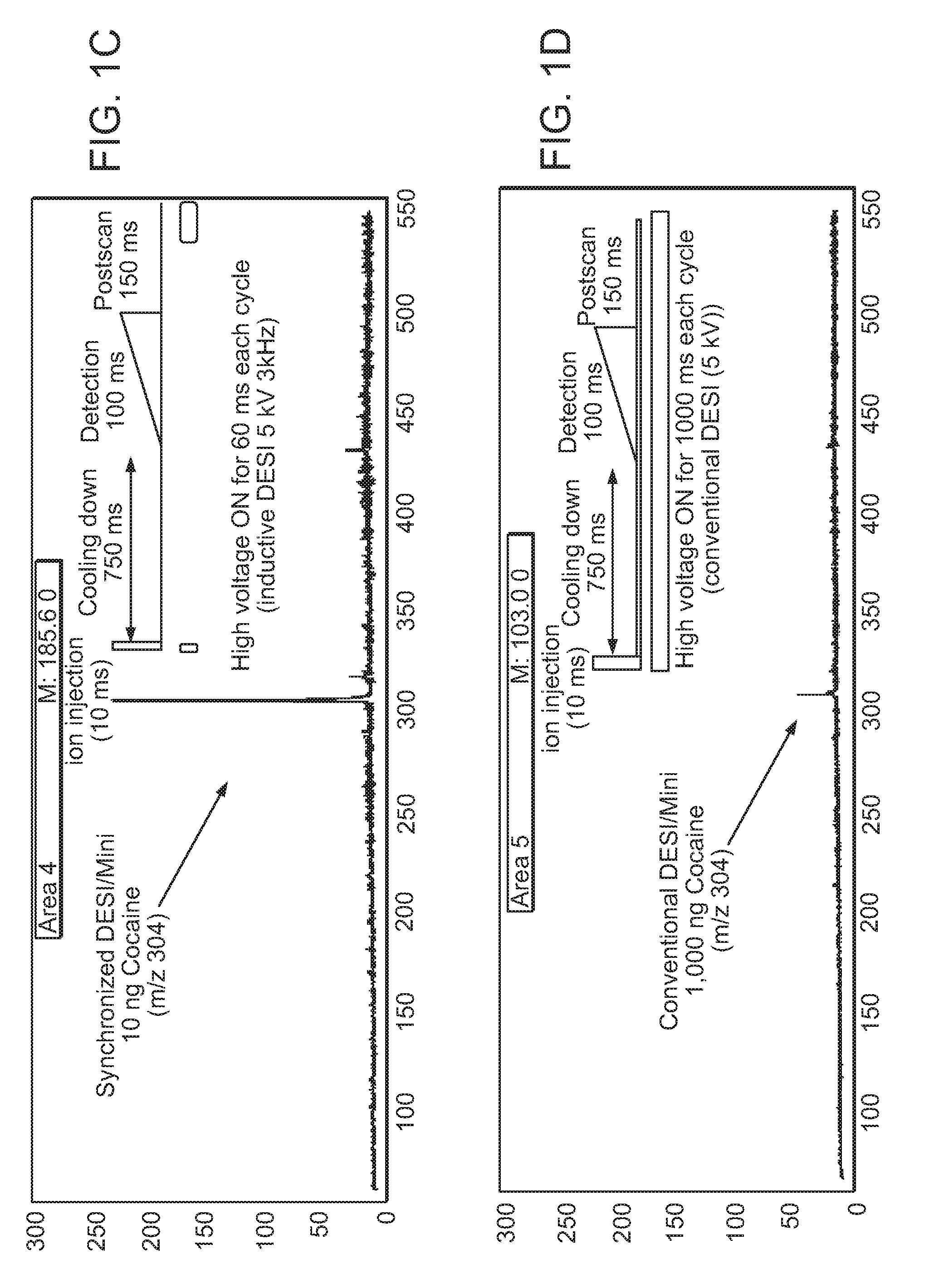Synchronization of ion generation with cycling of a discontinuous atmospheric interface
a technology of atmospheric interface and synchronization of ion generation, which is applied in the direction of instruments, particle separator tube details, separation processes, etc., can solve the problems of ineffectiveness when fast reaction kinetics, inability to monitor on-line, and limited capabilities, so as to reduce solvent usage, reduce nebulizing gas usage, and improve sensitivity
- Summary
- Abstract
- Description
- Claims
- Application Information
AI Technical Summary
Benefits of technology
Problems solved by technology
Method used
Image
Examples
example 1
Materials and Methods
[0073]Experiments were carried out using a custom built miniature mass spectrometer (Mini 10; Gao et al., Anal. Chem. 2006, 78, 5994-6002) or a Thermo LTQ mass spectrometer (Thermo Scientific, San Jose, Calif.). Capillary temperature: 150° C.; capillary voltage: 15 V; tube lens voltage: 240 V. A custom power supply provided a pulsed output of 50-5,000 Hz and 0-8 kV. DESI (Takats et al., Science 2004, 306, 471-473) conditions were: nitrogen gas 150 psi, a metal tube (id 250 μm, 5 cm long) serves as outer electrode, an inner silica capillary serves as the spray emitter (id 50 μm), angle of DESI sprayer to substrate set at 40°, distance between spray tip and sample set at 2 mm, distance between sample and MS inlet, 3 mm; the spray solution was MeOH / water (v:v=1:1), Commercial silica nanoelectrospray tips of 20 μm were obtained from New Objective (Woburn, Mass., USA).
example 2
On-Line Reaction Monitoring
[0074]Reaction monitoring using MS is of interest because of its chemical specificity, sensitivity and speed. There are many available ambient ionization methods and there have been various attempts to use them for on-line reaction monitoring. Those systems exhibit weaknesses, such as only being capable of off-line monitoring, which becomes ineffective when fast reaction kinetics and short-lived reaction intermediates are involved, having practical drawbacks including severe capillary blockage when used for on-line monitoring of samples even with modestly high concentrations of salts, and system set-ups that are all open-to-air, meaning that reactions sensitive to air / moisture are not currently continuously monitored by MS.
[0075]This example shows an on-line reaction monitoring system using inductive electrospray ionization mass spectrometry (MS) to continuously monitor reacting chemical and biochemical systems to detect disappearance of reagents and forma...
PUM
 Login to View More
Login to View More Abstract
Description
Claims
Application Information
 Login to View More
Login to View More - R&D
- Intellectual Property
- Life Sciences
- Materials
- Tech Scout
- Unparalleled Data Quality
- Higher Quality Content
- 60% Fewer Hallucinations
Browse by: Latest US Patents, China's latest patents, Technical Efficacy Thesaurus, Application Domain, Technology Topic, Popular Technical Reports.
© 2025 PatSnap. All rights reserved.Legal|Privacy policy|Modern Slavery Act Transparency Statement|Sitemap|About US| Contact US: help@patsnap.com



